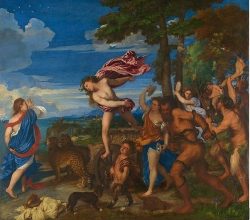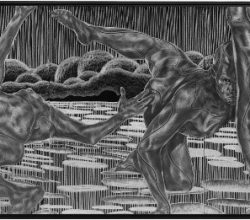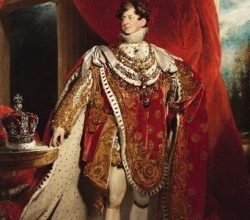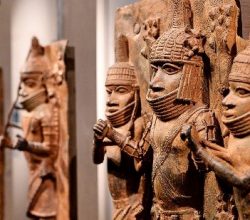
The hidden toilet humour in a Titian masterpiece
Kelly Grovier | bbc.com | 14th August 2020
A London show of Titian’s late works has prompted a closer look at his celebrated Bacchus and Ariadne. Right in the middle of the painting is a caper flower, traditionally a remedy for flatulence. The plant points to Bacchus’s rear end, hinting at a second reason for his odd mid-air pose. Ariadne inelegantly grabs her posterior. Intended for display in a private room, the work is a “trope of whiffiness … a rude and rawdy whoopee-cushion for the eyes.”




